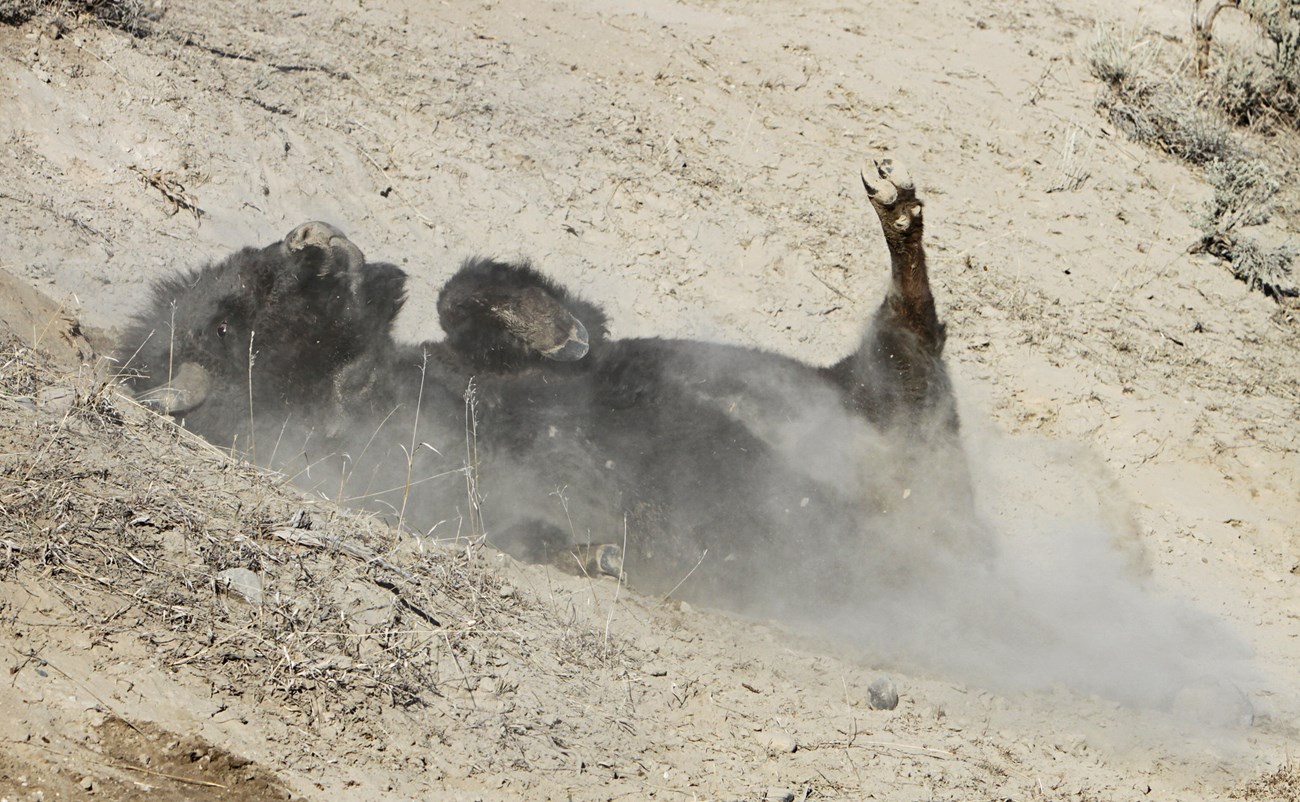Last updated: June 3, 2025
Article
The Bison Beat
The national park most famous for its bison is Yellowstone National Park. Watch the video below to learn more about their bison herds.
- Duration:
- 6 minutes, 55 seconds
Yellowstone preserves the most important bison herd in the United States. Learn more about the near extinction and recovery of these remarkable animals, how they make it through harsh winters, and what their survival says about our ability to share the landscape with another species.
Fun Facts about Bison
-
Bison are the largest land mammal in North America. Male bison bulls weigh up to 2,000 pounds and stand 6 feet tall, while females cows weigh up to 1,000 pounds. Bison calves weigh 30–70 pounds at birth.
-
Yellowstone National Park is the only place in the U.S. where bison have continuously lived since prehistoric times. What makes Yellowstone's bison so special is that they're the pure descendants (free of cattle genes) of early bison that roamed our country's grasslands. As of July 2015, Yellowstone's bison population was estimated at 4,900—making it the largest bison population on public lands.

NPS / Neal Herbert
- While bison and buffalo are used interchangeably, in North America the scientific name is bison. Actually, it's Bison bison bison (genus: Bison, species: bison, subspecies: bison), but only saying it once is fine. Historians believe that the term "buffalo" grew from the French word for beef, "boeuf."
- What's a "red dog"? It's a baby bison. Bison calves tend to be born from late March through May and are orange-red in color, earning them the nickname "red dogs." After a few months, their hair starts to change to dark brown and their characteristic shoulder hump and horns begin to grow.

NPS / Ashton Hooker
- The history of bison and Native Americans are intertwined. Bison have been integral to tribal culture, providing them with food, clothing, fuel, tools, shelter and spiritual value. Established in 1992, the Inter Tribal Buffalo Council works with the National Park Service to transfer bison from national park lands to tribal lands.
- You can judge a bison's mood by its tail. When it hangs down and switches naturally, the bison is usually calm. If the tail is standing straight up, watch out! It may be ready to charge. No matter what a bison's tail is doing, remember that they are unpredictable and can charge at any moment. Every year, there are regrettable accidents caused by people getting too close to these massive animals. It's great to love the bison, but love them from a distance.

NPS / Jacob W. Frank
- Wind Cave National Park's herd helped revive bison populations around the country. The story starts in 1905 with the formation of the American Bison Society and a breeding program at the New York City Zoo (today, the Bronx Zoo). By 1913, the American Bison Society had enough bison to restore a free-ranging bison herd. Working with Interior, they donated 14 bison to Wind Cave National Park in South Dakota. More than 100 years later, the bison from Wind Cave have helped reestablishing other herds across the United States and most recently in Mexico.
- Bison may be big, but they're also fast. They can run up to 35 miles per hour. Plus, they're extremely agile. Bison can spin around quickly, jump high fences and are strong swimmers.
- Pass the salad, please. Bison primarily eat grasses, weeds and leafy plants—typically foraging for 9–11 hours a day. That's where the bison's large protruding shoulder hump comes in handy during the winter. It allows them to swing their heads from side-to-side to clear snow—especially for creating foraging patches.

NPS / Jacob W. Frank
- Bison can live up to 20 years old. The average lifespan for a bison is 10–20 years, but some live to be older. Cows begin breeding at the age of 2 and only have one baby at a time. For males, the prime breeding age is 6–10 years.
- A little dirt won't hurt. Called wallowing, bison roll in the dirt to deter biting flies and help shed fur. Male bison also wallow during mating season to leave behind their scent and display their strength.

NPS / Jim Peaco
- The American bison's ancestors can be traced to southern Asia thousands of years ago. Bison made their way to America by crossing the ancient land bridge that once connected Asia with North America during the Pliocene Epoch, some 400,000 years ago. These ancient animals were much larger than the iconic bison we love today. Fossil records show that one prehistoric bison, Bison latiforns, had horns measuring 9 feet from tip to tip.
